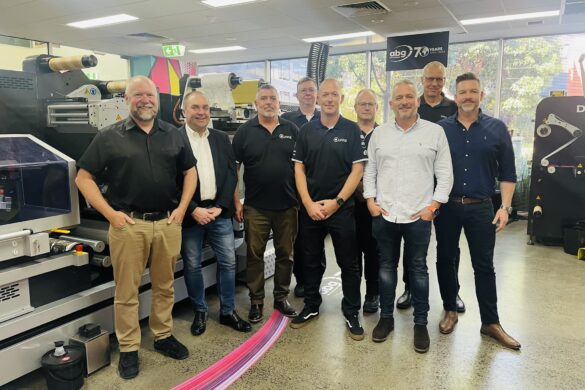Digital printing of folding cartons is gaining pace, just as label production has done. Fujifilm introduced the Jet Press 720S with commercial printing in mind but now, with the new 750S plus the thicker media and food safe inks options, it brings a lot of potential to the carton side of packaging.
Digital printing has come a long way in the last twenty years, with toner-based technologies having had the most success in delivering on demand print. Despite this success, however, the majority of folding carton print is still produced using traditional offset and flexo presses.
In Europe, where the Jet Press has seen the most success, around a third of all current customers already produce some form of packaging on the press. With the introduction of the 750S, it is now 33% faster, at up to 3,600 sph, and can perform variable data printing at full speed. This makes the new Jet Press 750S ideally suited to printing versioned and short run packaging to coincide with specific events, localities or store promotions.
It can be optioned up to accommodate heavier weight folding carton stock, up to 0.6mm in thickness, and printed sheets from the press have been tested and found to be compatible with a wide range of analogue and digital coating, foiling, lamination and cutting solutions. An automatic bridge is also available to connect to online coating solutions. Fujifilm is now also able to offer a food safe ink, making the Jet Press 750S the first B2 digital press approved to print primary food packaging. This new, low migration, aqueous food safe ink complies with stringent primary food contact regulations, including Swiss Ordinance 817.023.21 and European Commission Regulation 1935/2004, and has been specially formulated to work with inline (via a bridge) and nearline UV or aqueous coatings.
Higher uptime, improved printheads Uptime of the Jet Press 750S has improved even further than the 90%+ reported by 720S users, thanks to two new features. The first is a new printhead self-cleaning process called ‘Overflow Cleaning’ which carries out head cleaning at times when the press is between jobs or the printhead assembly is in motion. The second is a new Active Head Retraction (AHR) system which lifts the print bars from the drum when a paper deformation is detected (<3mm), reducing the likelihood of paper jams caused by damaged paper or board.
Remote usability has also been improved on the Jet Press 750S, with users able to carry out job management tasks, including allocating new jobs and certain press functions, remotely via an iPad, as an option.
Fujifilm’s own Dimatix Samba printheads are found in many high-end print devices. Fabricated using precision MEMS1 technology, they can achieve 1200 x 1200 dpi native resolutions. However, they also take advantage of Fujifilm’s unique VersaDrop technology, allowing the size and shape of each ink drop to be precisely controlled and placed on the paper. Thanks to VersaDrop technology, the ink droplets can be reproduced in four levels of greyscale, with the effective resolution therefore much higher.
The new generation press, like the Jet Press 720S, features excellent de-inkability of printed sheets for recycling, while the new drying system, which requires 23% less power, offers an additional environmental benefit. And of course, there are no plates and chemistry involved.












